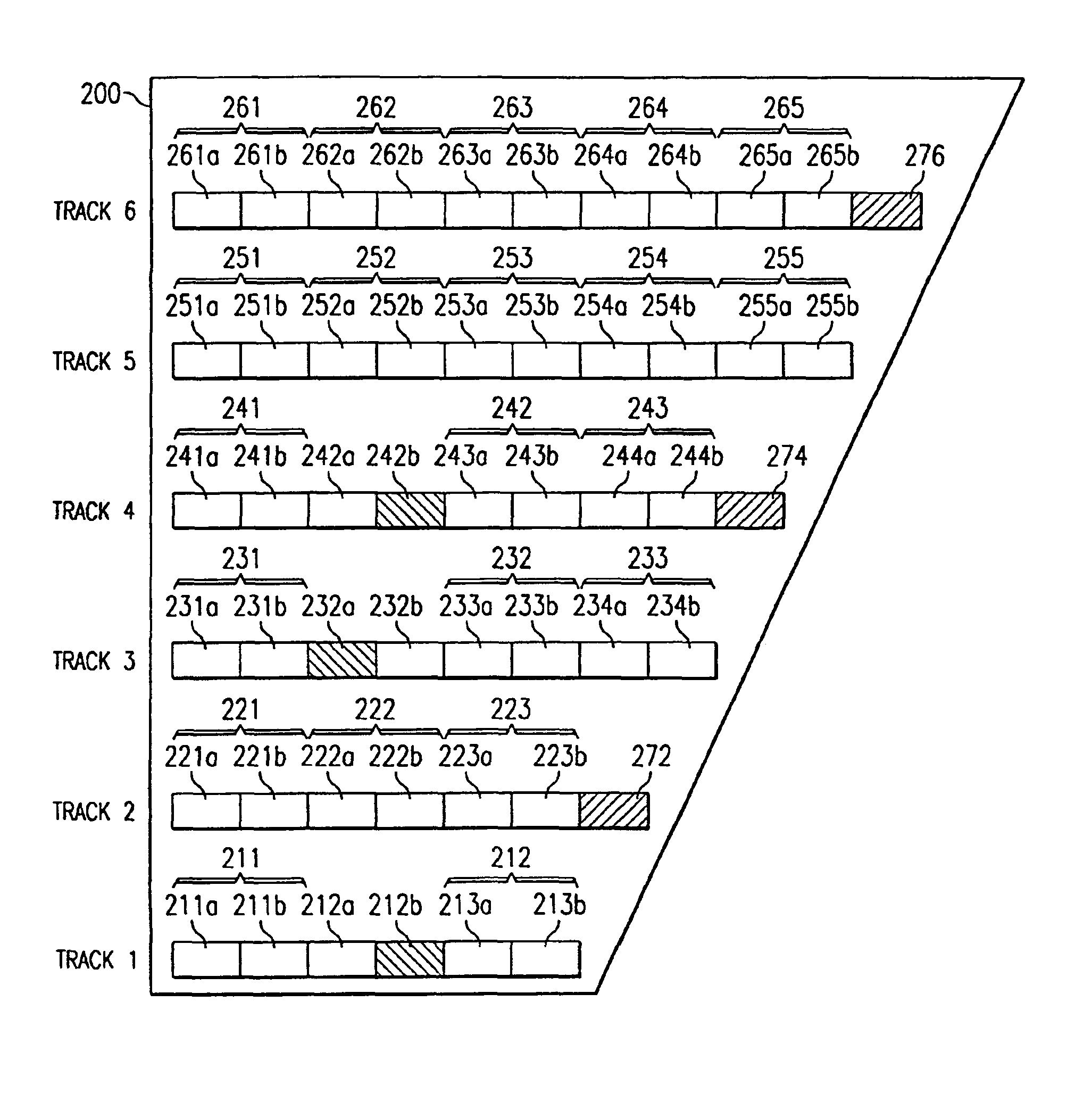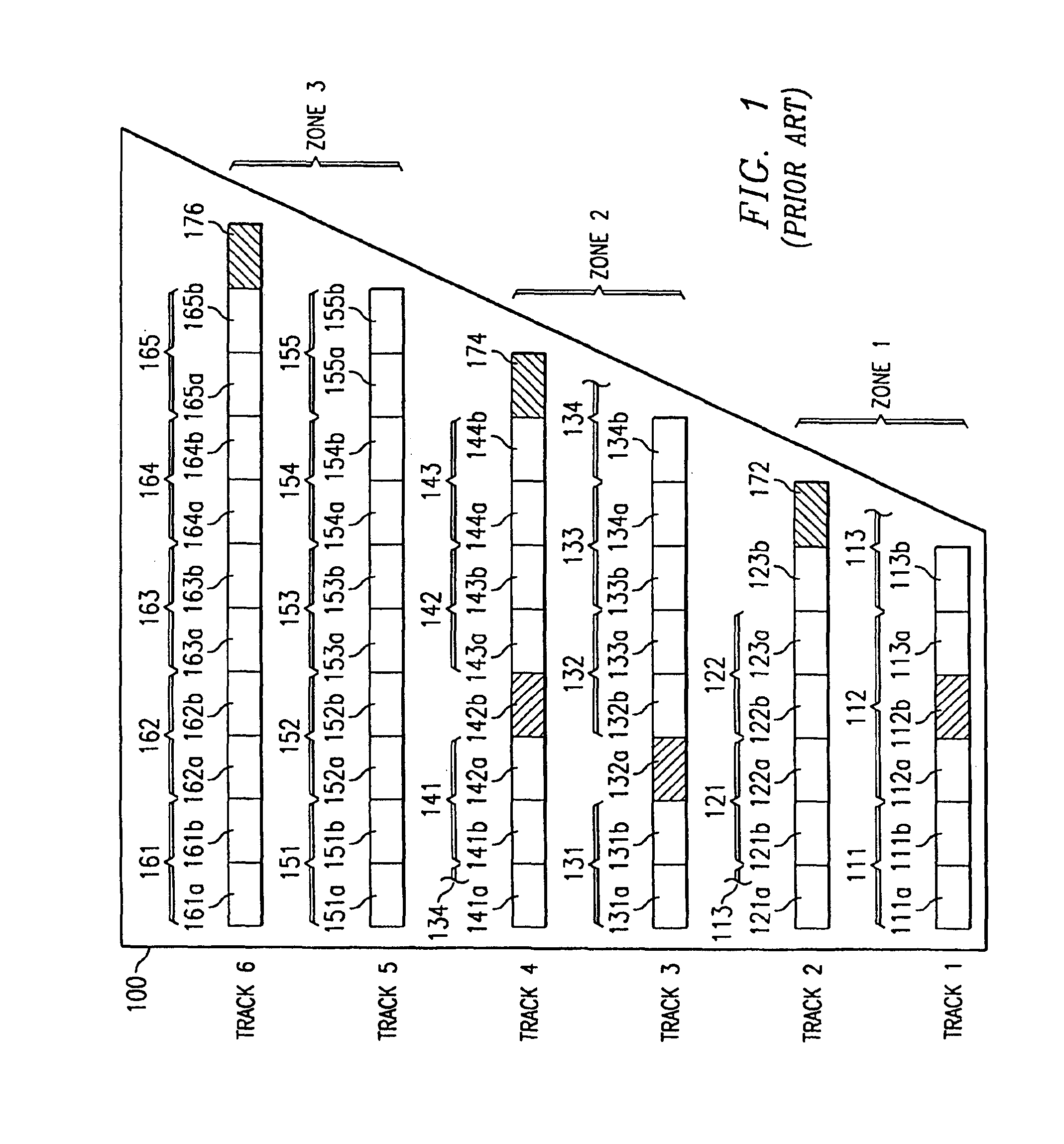Systems and methods to perform defect management to block addressable storage media
a technology of addressable storage media and defect management, which is applied in the direction of memory address/allocation/relocation, digital signal error detection/correction, instruments, etc., can solve problems such as inflexible and complex traditional schemes for defect management, and unsuitable data storage portion,
- Summary
- Abstract
- Description
- Claims
- Application Information
AI Technical Summary
Benefits of technology
Problems solved by technology
Method used
Image
Examples
Embodiment Construction
[0046]In understanding the present invention it is helpful to review traditional schemes for providing defect management. Accordingly, with reference to FIG. 1, defect management according to the prior art will be briefly discussed. Shown in FIG. 1 is bulk media 100 having tracks 1 through 6 defined thereon. It shall be appreciated that the tracks of media 100 are progressively increased in length. This is due to the media of this example is representative of a disc surface where the tracks are concentric rings which, as they are disposed more near the circumferential edge of the disc, are larger.
[0047]The tracks of media 100 have sectors defined therein, i.e., sectors 111a-113b for track 1, sectors 121a-123b for track 2, sectors 131a-134b for track 3, sectors 141a-144b for track 4, sectors 151a-155b for track 5, and sectors 161a-165b for track 6.
[0048]It shall be appreciated that in progressing from track 1 to track 6, there are areas within ones of the tracks, here tracks 2, 4, an...
PUM
| Property | Measurement | Unit |
|---|---|---|
| media defect | aaaaa | aaaaa |
| area | aaaaa | aaaaa |
| area parameter | aaaaa | aaaaa |
Abstract
Description
Claims
Application Information
 Login to View More
Login to View More - R&D
- Intellectual Property
- Life Sciences
- Materials
- Tech Scout
- Unparalleled Data Quality
- Higher Quality Content
- 60% Fewer Hallucinations
Browse by: Latest US Patents, China's latest patents, Technical Efficacy Thesaurus, Application Domain, Technology Topic, Popular Technical Reports.
© 2025 PatSnap. All rights reserved.Legal|Privacy policy|Modern Slavery Act Transparency Statement|Sitemap|About US| Contact US: help@patsnap.com



